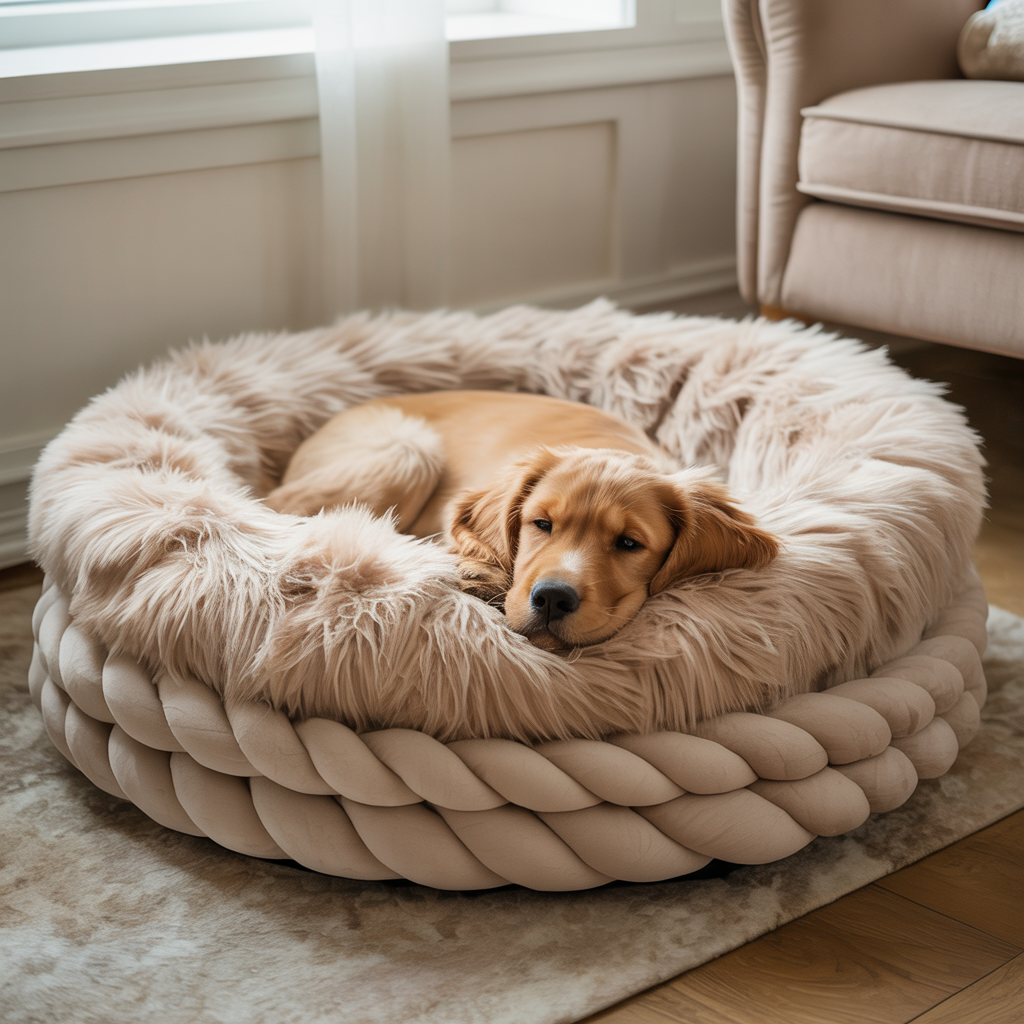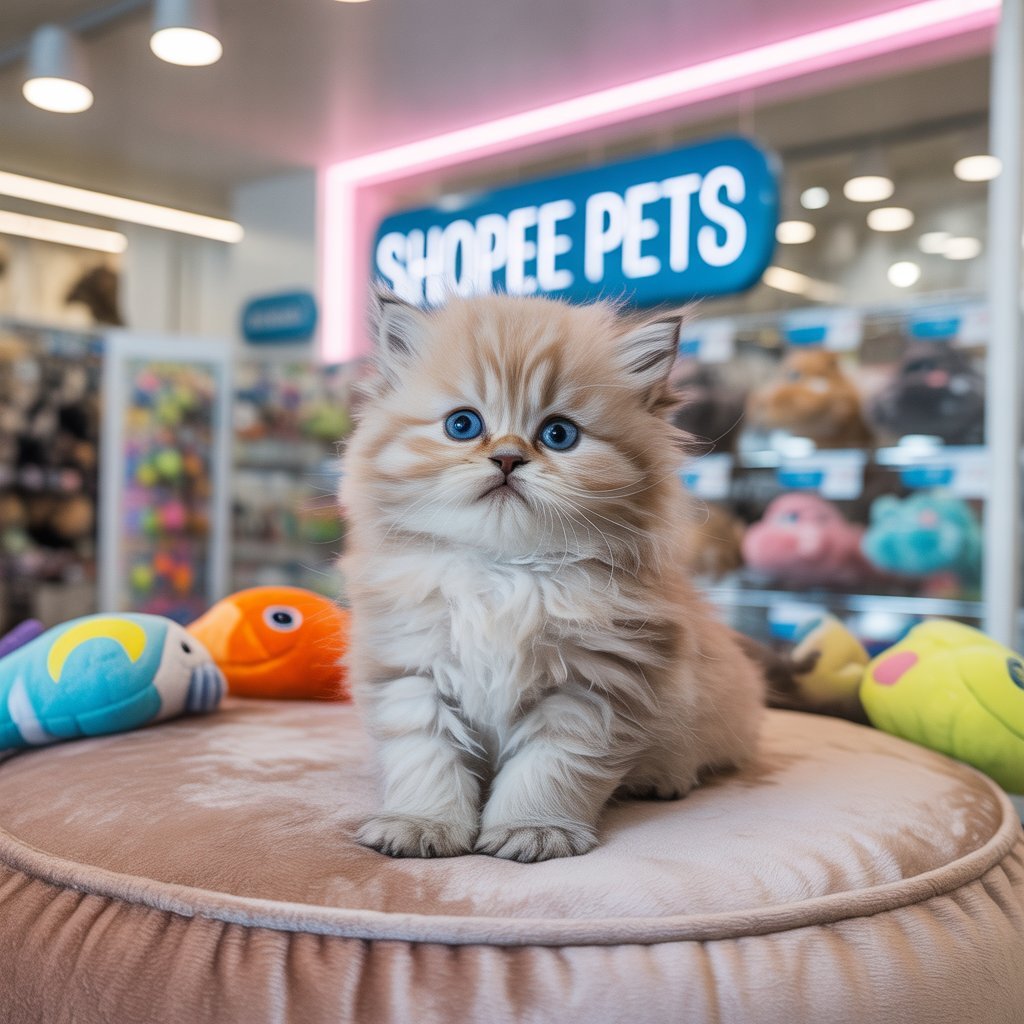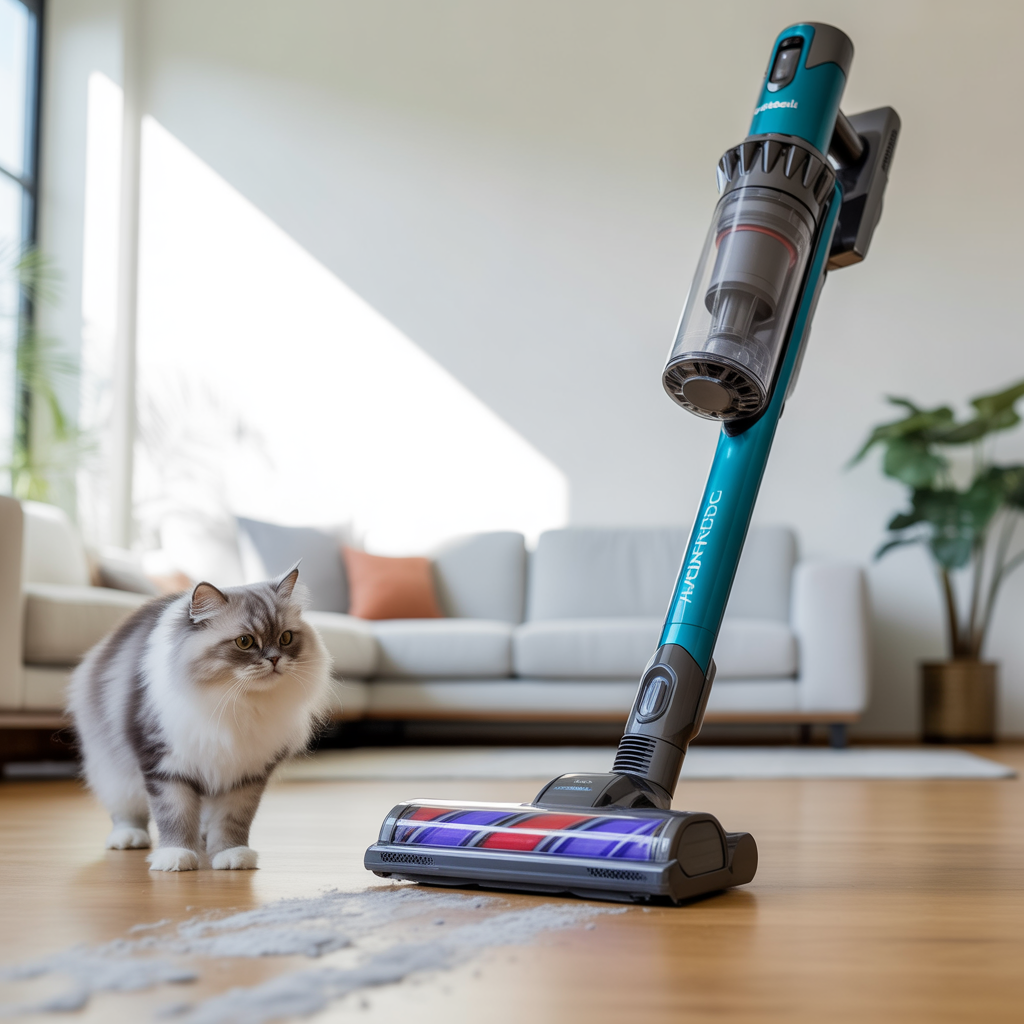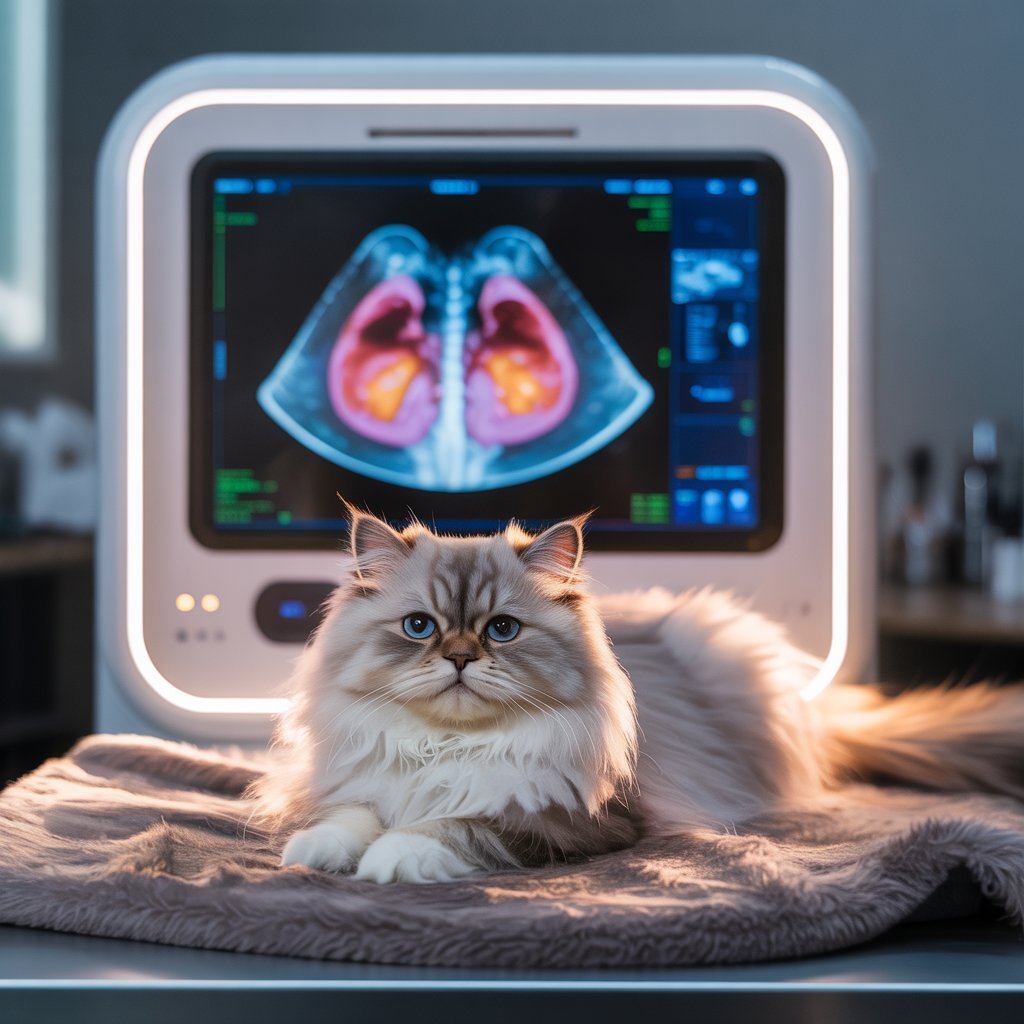A good-quality pet bed is among the primary investments providing comfort for our beloved pets. Animals, just like human beings, need a soft and supportive place to relax and re-energize. There is also a very common opinion that pets can sleep anywhere and everywhere—be it the floor, the couch, or, worst of all, their owner’s bed. A good pet bed endowed with great design and function ensures other health, comfort, and behavioral advantages that can never be simply brushed off.
A pet bed is not merely a pad or a blanket; it is an intelligently designed resting place tailored to a pet’s special needs. Joint health, warmth on those cold evenings, and their own “safe space” in the home are just some major functions fulfilled by the right bed. In dogs, this helps induce calmness and deep sleep; in cats, a bed serves to satisfy their innate longing to curl up and hide.
Let’s take a look at some of the fundamental reasons as to why quality pet beds should be an investment:
- Health and joint support: Orthopedic pet beds benefit older pets in particular in relieving pressure from joints and are suitable for dogs suffering from arthritis or hip dysplasia.
- Better sleep: Studies show sleeping in their own bed, pets snooze through longer hours without interruption as opposed to those who didn’t.
- Hygiene & Cleanliness: The pet bed concentrates fur, dirt, and dander in a particular space, thus allowing owners to clean their homes better.
- Behavioral Balance: Pets would have their space, giving them a feeling of security while lessening stress – all of which would lower unwanted behaviors such as excessive barking or scratching.
- Bonding & Boundaries: Having a separate sleeping area teaches pets about boundaries while also teaching pets that they are loved and cared for.
Did you know? 67% of pet owners in the U.S. purchase specially made beds for their dogs and cats, signifying how much comfort has become trendy in today’s pet care, according to American Pet Products Association.
Different kinds of Pet Beds
It may not be a very easy choosing the right pet bed from thousands of available options in styles, materials, and designs. Every unique bed has its own purpose and addresses specific needs, such as comfort and health, or age, or even seasonality. What will help make that choice easier is realizing how the various types are different from each other so that owners can make the proper decision on what’s best for their furry companions.
1. Orthopedic Pet Beds
Orthopedic beds are specially designed for pets that suffer from joint issues, arthritis, or any discomfort related to aging. Such beds normally consist of memory foam or high-density foam and offer adequate support to relieve pressure.
Best for:
- Old dogs and cats
- Large breeds that are predisposed to hip dysplasia
- Pets recovering from surgery
Benefits:
- Reduces pain and stiffness
- Allows for deep sleep by molding to the pet’s body
- Prevents further damage to the joints
2. Donut or Bolster Pet Beds
They are shaped in rounds and consist of raised edged so they nestle pets into a cozy form. Most cats and small dogs love it when they find one of these beds. Because the ends are raised, it gives an added warmth and comfort from being awake.
Best for:
- Small medium dogs and cats
- Pets that like to do nose-jaunts at bedding or curl up
- High-strung pets that find comfort in enclosed spaces
Benefits:
- Soothing effect
- Keeps the pet cozy
- Removable and washable covers
3. Elevated Pet Beds (Cots)
Sturdy framework with breathable fabric stretched on it all raised from the ground makes up elevated pet beds; this construction offers increased airflow to keep the pets cooler during warm climates.
Best for:
- Dogs having thick overcoats
- Outdoor uses (patio, garden, camping)
- Hot and humid areas
Benefits:
- Typically keeps pets cool
- Keeps them out of dirt and dust as well as away from pest contact
- Sturdiness and easy cleaning
4. Heated Pet Beds
Heated pet beds are typically for indoor pets offered warmth to those pets that live in cold areas or to them that might have thin skins. Electric heat or self-warming fabrics that reflect body heat can physically be made warm to self-warm.
Best for:
- Cats and small dogs that feel the cold.
- Short-haired or hairless breeds.
- Older pets with sore joints.
Benefits:
- Keeps pets nice and toasty in winter months
- Curb sore muscles and joints
- Longer rest periods.
5. Cooling Pet Beds
Cross-function of it is heating a pet bed; it is mainly for hot areas. Ideal cooling beds are usually made from gel-infused foam or pads base on water to absorb and dissipate the heat.
Best for:
- Pets prone to overheating
- Breeds that have thick fur (Huskies, Malamutes, Persians)
- Best during summertime
Benefits:
- Prevention of dehydration and heat stress
- Keeps pets cool on really hot days
- Portability for traveling and outdoor activities
6. Cave Style Pet Beds
Cave hooded pet beds provide a covered den-like environment. These beds are attractive to any cat or small dog that prefers to hide or sleep enclosed.
Best for:
- Shy or anxious pets
- Cats with a strong nesting instinct
- Diminutive dogs such as Chihuahuas or Dachshunds
Benefits:
- Provides safety and privacy
- Kept warm
- Will make for an attractive addition to your home’s decor.
Selecting the ideal dog bed for a pet?
Does not follow a standardized way of thinking. Every pet possesses individual specifications when considering the pet’s age, size, health, breed, and sleeping style. Given these points, care needs to be taken to provide a fine balance of comfort, support, and durability to the intended bed.
1. Size or Weight Considerations
One of the most important factors when it comes to the bed’s size is pretty much. A small bed will definitely feel claustrophobic for your pet, while a king-sized bed will feel empty and lack the cozy cradled feeling they crave.
- Small Pets (under 20 lbs): Prefer donut or cave-style beds, where they may curl up.
- Medium Pets (20-50 lbs): Either do well with bolster beds or with standard cushion beds.
- Large Breeds (50+ lbs): Require orthopedic or elevated beds for joint support.
Tip: Measure from the nose to the tail when your pet is in a sleeping position and add 6–12 inches for the right bed size.
2. Study Sleeping Style
Like people, pets have their own sleeping styles.
Curlers: These pets would require a donut bed style or maybe a cave bed style, where they can curl up.
Stretchers: These pets who like to stretch may prefer to be accommodated with an orthopedic bed in a rectangular format.
Leaning Sleepers: These pets like to rest against something. Therefore, they will enjoy spending time on a bolster bed with raised edges.
Burrowers: Pets who like to dig and make a nesting area will love to have a covered or cave bed style.
Knowledge about your pet’s natural sleeping position assists in making your choice much more efficiently.
3. Age and Health
- Puppies & Kittens: They need washable and chew-proof beds since they are always playful and prone to accidents.
- Adult Pets: Comfort and durability are paramount. Standard cushion or bolster beds are the best.
- Senior Pets: Arthritis pain, weak joints, and other conditions are lessened best on orthopedic memory foam beds.
According to the AMVA, senior dogs sleep for 16hr-18hr per day, so having a supportive bed in this time is ever more crucial for their health.
4. Climate and Environment
- Cold Climate: High-sided and heated beds will help retain warmth.
- Hot Areas: Cooling beds or elevated cots are to keep the pets comfortable.
- Outdoor Use: Waterproof and weatherproof beds are a prerequisite.
5. Material and Durability
Several fabrics and fillings are used for pet beds:
- Memory Foam: Most suitable for an orthopedic purpose.
- Polyfill & Cotton: Comfortable and light-weight for the dog but with poor support for large dogs.
- Smaller Dryers with Faux Fur Plush: Neatly compacts warm, comfy fabric but are difficult to wash.
- Canvas/Nylon: Very tough, chew-proof, and easy to wipe.
Expert tip: For any chewing pet, avoid those beds which have zippers or loose fabrics and choose one made from heavy duty materials.
Storage and Maintenance:
Since hygiene is a priority, removable, machine-washable covers are a big plus. Some have waterproof liners to keep accidents off the bed.
Important Considerations before Choosing a Pet Bed
Choosing a cute design is not the only requirement in investing in a pet bed; one also needs to evaluate a set of factors that would directly affect your pet’s comfort, health, and lifetime use of the bed. Most pet owners get it wrong by buying basing only on appearance, the right thing to do is to combine aesthetics with functionality, durability, and suitability for your pet’s lifestyle.
1. Size and Shape
The size of the bed must fit that of the pet as per its preferred sleeping style. A large dog that sprawls will require a rectangular orthopedic bed, while a cat that curls up will prefer a round donut-style bed. Always measure sleeping pets rather than playing with the little ones that seem very small.
The right size of the bed should correspond to that of the pet. A dog, which sprawls, would need a rectangular orthopedic bed, while a curled-up cat would prefer a round donut-style bed. Measure your pet while sleeping to avoid buying a small bed.
2. Support and Comfort
Not every bed supports the same. For young healthy pets, normal cushion beds may be sufficient, but for fragile elderly pets or joints-prone breeds, memory foam orthopedic beds become indispensable. Proper support reduces pressure points, ensuring better sleep quality.
3. Durability and Material Quality
Before resting, pets usually paw, bite, or dig at the surface. A low-grade pet bed simply will not be able to withstand this much daily use.
Look for:
- durable canvas or ballistic nylon for chewers
- waterproof liners for release-from-jain pets
- non-slip bottoms to keep the bed in place on smooth floors
4. Washability and Maintenance
Hygiene plays a big role in your pet’s health. Where comfort collects hair, dander, and smells becomes fertile breeding grounds for bacteria and allergens. Always choose a bed with removable, machine-washable covers. For extra defense waterproof inner linings.
5. Climate Suitability
The environment matters:
- Cold climates: Bolstered, faux furs, or heating pads support the delicate heat balance.
- Hot climates: Elevated or cooling gel beds alleviate overheating.
- All seasoned homes: These are versatile, featuring reversible beds-a side warm and a cool side.
6. Safety Features
- They should never compromise safety in pet beds.
- Electrical heated beds have chewable cords and auto shut-off features.
- All stuffing and foam must be non-toxic and hypoallergenic.
- It should be stable, without wobbles when elevated, especially for senior pets.
7. Price vs Value
Of course, the cheaper bait catches the prey animal les all the time; beds this cheap flatten out in months and often result in further health problems. One would rather invest more upfront in a good, durable pet bed than spend more over time replacing cheap, poor-quality beds or potentially incurring vet bills for illnesses caused by them
Maintenance and Cleaning Tips for Your Pet’s Bed
An excellent pet bed loses its worth in comfort and hygiene over time if not maintained. Pets shed hair, bring dirt from outside and even soil their beds sometimes. Hence, regular cleaning is the need of the hour for such preventive measures. Besides, a clean bed goes a long way in making the product last and preventing skin infections, allergies, and odors in homes.
1. Follow Manufacturer’s Instructions.
Before every wash, check care labels. Some beds are machine-washable, while others use spot cleaning or professional washing. Ignoring an instruction can cause discoloration on fabric or fraying of filling.
2. Washable Cover.
Of course the easiest way to keep the hygiene up is an easily removable machine-washable cover; wash it every 1-2 weeks in pet-safe detergents free from harsh chemicals and strong fragrances .
3. Vacuum and Shake On Regular Basis.
Between washes, also vacuum the pet bed.
Remove:
- Loose fur
- Dander
- Dirt and crumbs
- Shaking out the bed out of doors once every week will also remove debris and keep it fresh.
4. Spot Cleaning For Accidents
With urine, vomit, or food stains being incredibly spot clean immedaitely after the accident occurred. Clean stain mainly by using diluted mild detergent or pet-safe enzymatic cleaner to break down the stains and kill the odor-causing bacteria.
5. Disinfecting Without Harsh Chemicals
Bleach might be the strongest disinfectant, but it irritates the skin and respiratory system of your pet. Instead of bleaches, use:
- White vinegar (natural disinfectant)
- Baking soda (odor neutralizer)
- Pet-safe sprays recommended by veterinarians
6. Rotate and Air Out the Bed
A pet bed in direct sunlight for several hours kills bacteria, dries moisture, and eliminates foul smells. The act of rotating the bed also prevents uneven compression of filling.
7. Pest Protection:
These are a refuge for fleas, ticks, and mites. Never wash the bedding from regular flea season:
- Wash bedding during flea-prevention season.
- Flea preventives sprays or powders should be used with advice from a veterinarian.
- Keep sleeping locations clean by vacuuming the surrounding floors often.
8. Replace When Necessary.
Most beds are relatively poor in quality. The year of manufacture proved that, bed or not, nothing lasts forever. Cushing flattened, fabric torn, or bad lingering odors that refuse to go away after cleaning mean it’s time to replace the bed. Under normal usage, a good-quality pet bed will usually last for about 1-3 years.
Hygiene Care
After being washed properly, hygienic conditions become extremely important for any bed out in the market, and comforts built into it will be lost. Dogs shed fur, cats carry dirt, pets can get dirty from the outside world, and accidents happen, which all need to be cleaned. An unclean bed not only lessens its life but also creates its own havoc in terms of skin infections, allergies, or smells filling up your living environment.
1. Follow-The-Care-Label
Whenever in doubt about cleaning, always check the first thing you do, which has to be the care label. This could help you know whether they can be washed in a machine or require spot cleaning or professional washing. Anything other, and you might risk damaging the fabric of the bed or its filling.
2. Choose Covers That Can Be Washed
Ease of cleanliness is definitely enhanced with removable covers that can go into a washing machine. Wash covers every 1-2 weeks, with detergent that is pet-safe, free of harsh chemicals, and gentle in terms of strong fragrances.
3. Vacuum and Shake
In between washes, vacuum the pet bed to remove:
- Fur that is loose
- Dander
- Crumbs and dirt
Shaking it out once a week outside will also release debris that will contribute to keeping things fresh.
4. Spot-Clean for Accidents
Maintaining spot cleaning is most important where urine, vomit, or food stains are concerned. Any stains can now be washed down with water and mild detergent or an enzymatic cleaner that is safe for pets to break down the stain and destroy odor-making bacteria.
5. Disinfect Without Harsh Chemical
Harsh as it may seem, bleach may aggravate your pet skin and respiratory tract. Try the following instead:
- White vinegar (natural disinfectant)
- Baking soda (odor neutralizer)
- Pet-safe sprays approved by veterinarians
6. Rotate and Air
Giving the pet’s bed a few hours in sunlight will help to kill any bacteria and remove moisture and odor. Rotation will ensure that the filling does do compressing in an uneven manner.
7. Prevent Infestation
The beds bring about fleas, ticks, and even mites. In prevention of this infestation, taking note of the following rules becomes necessary during the flea season:
- Wash bedding regularly
- Employ flea preventive sprays or powders (approved by vet)
- Keep sleeping area clean and vacuum nearby floor frequently
8. Replace When Needed
No matter how well maintained a bed, it does not last forever. Flattened cushioning, ripping fabrics, or persistent odor problems won’t go away even after lots of cleaning: these beds need to go back for a new lease of life. Well-kept beds usually last between one to three years, depending on how much they are used.
Conclusion:
The bed is not only used for comfort but also for investing in a pet’s health, happiness, and well-being. Just as one requires a quality sleep resting surface on a good mattress for sleeping well, so does a pet need space on a bed tailored to its own physical and emotional needs. The proper bed can mitigate that sore back in an aging pet, keeping it warm, secure, and clean-a significant part of the daily existence of your companion.




